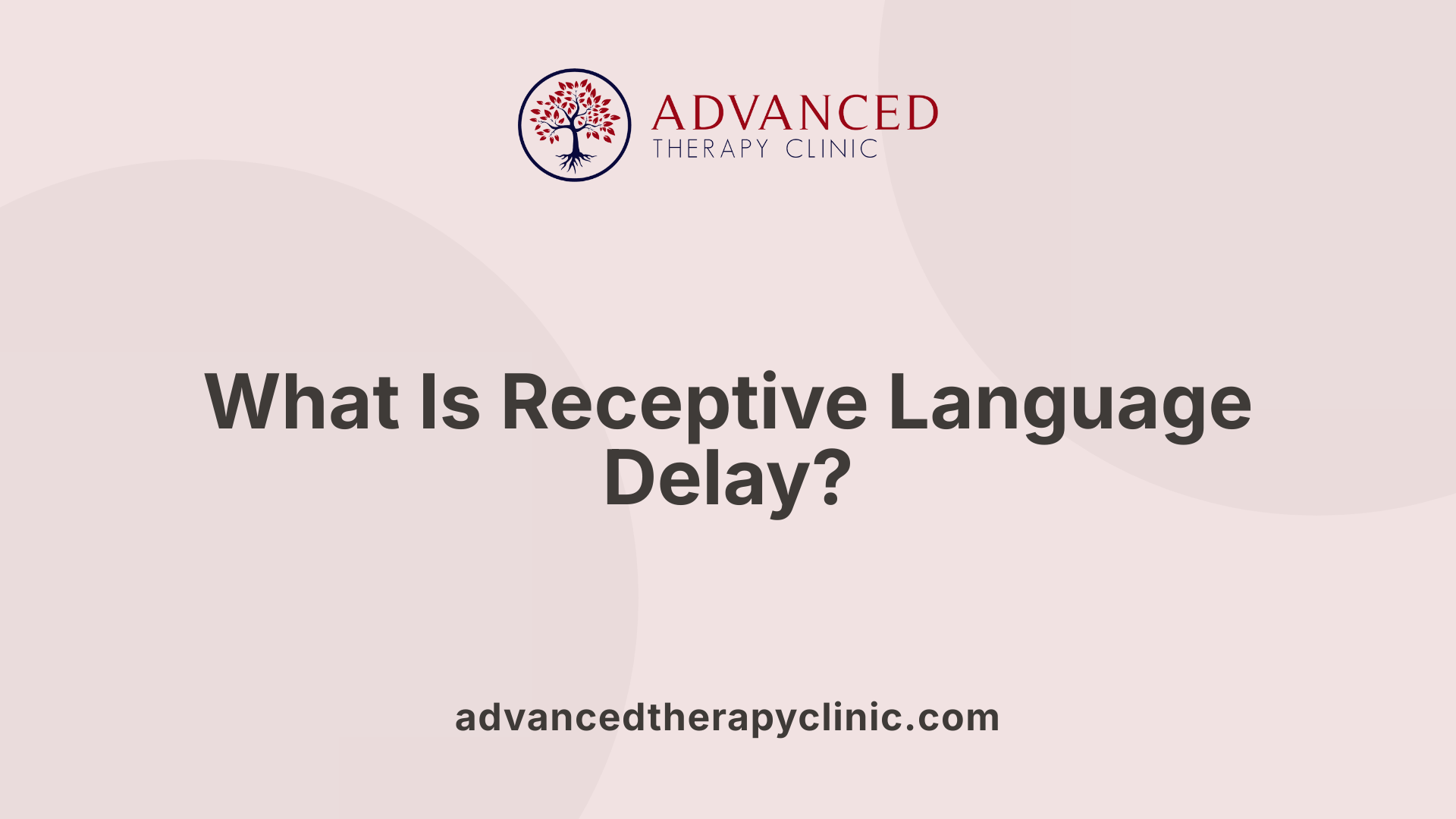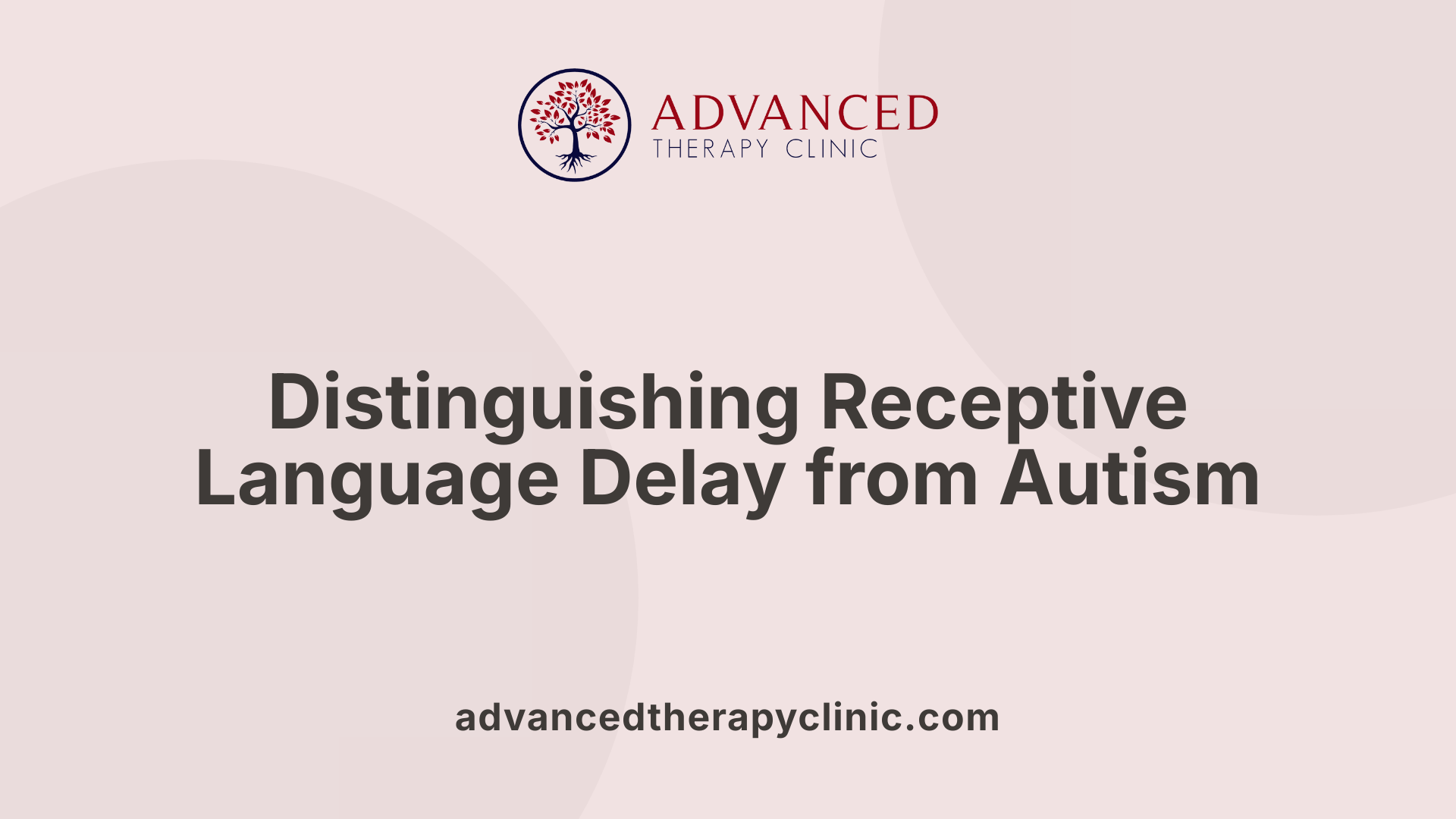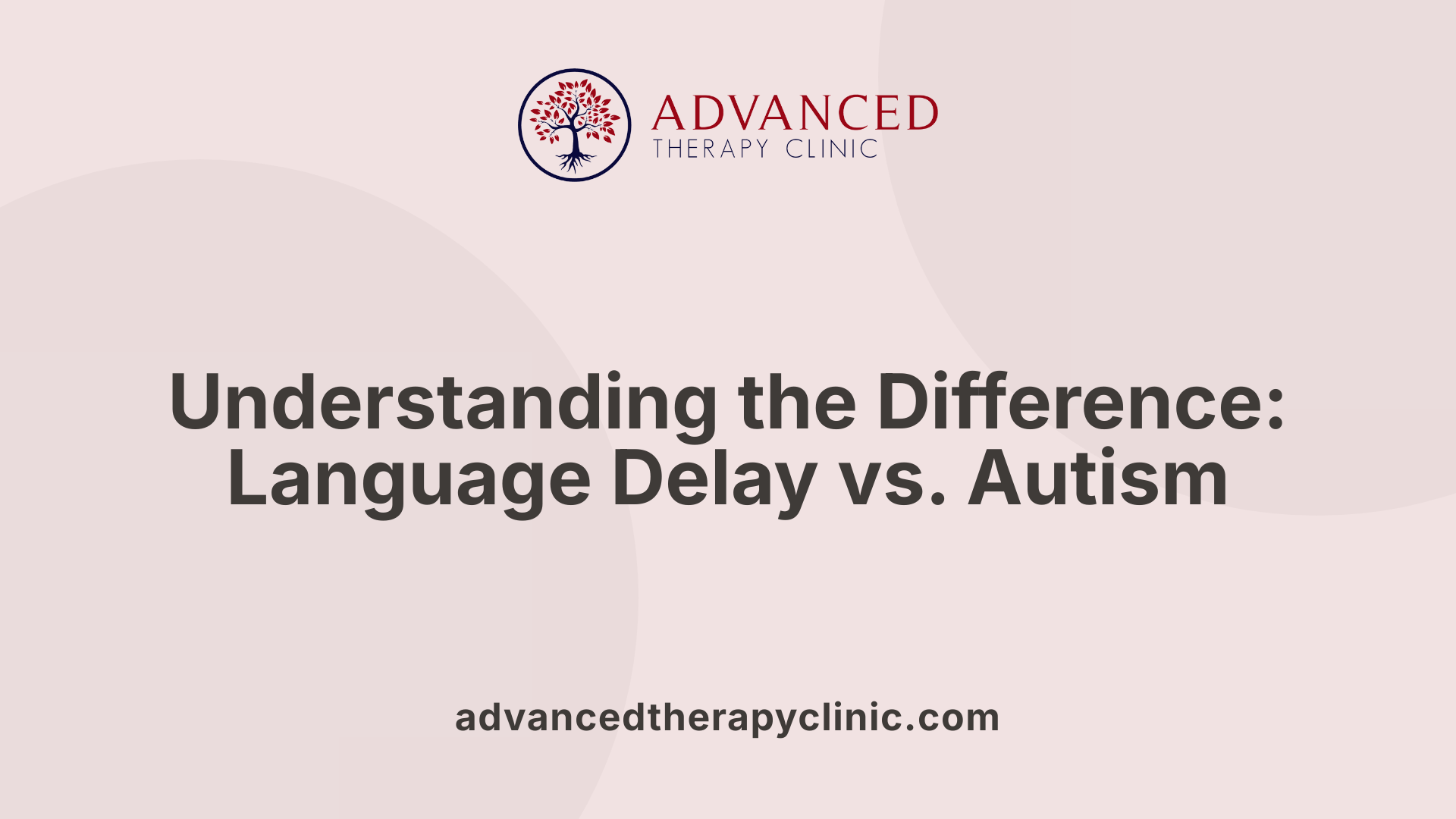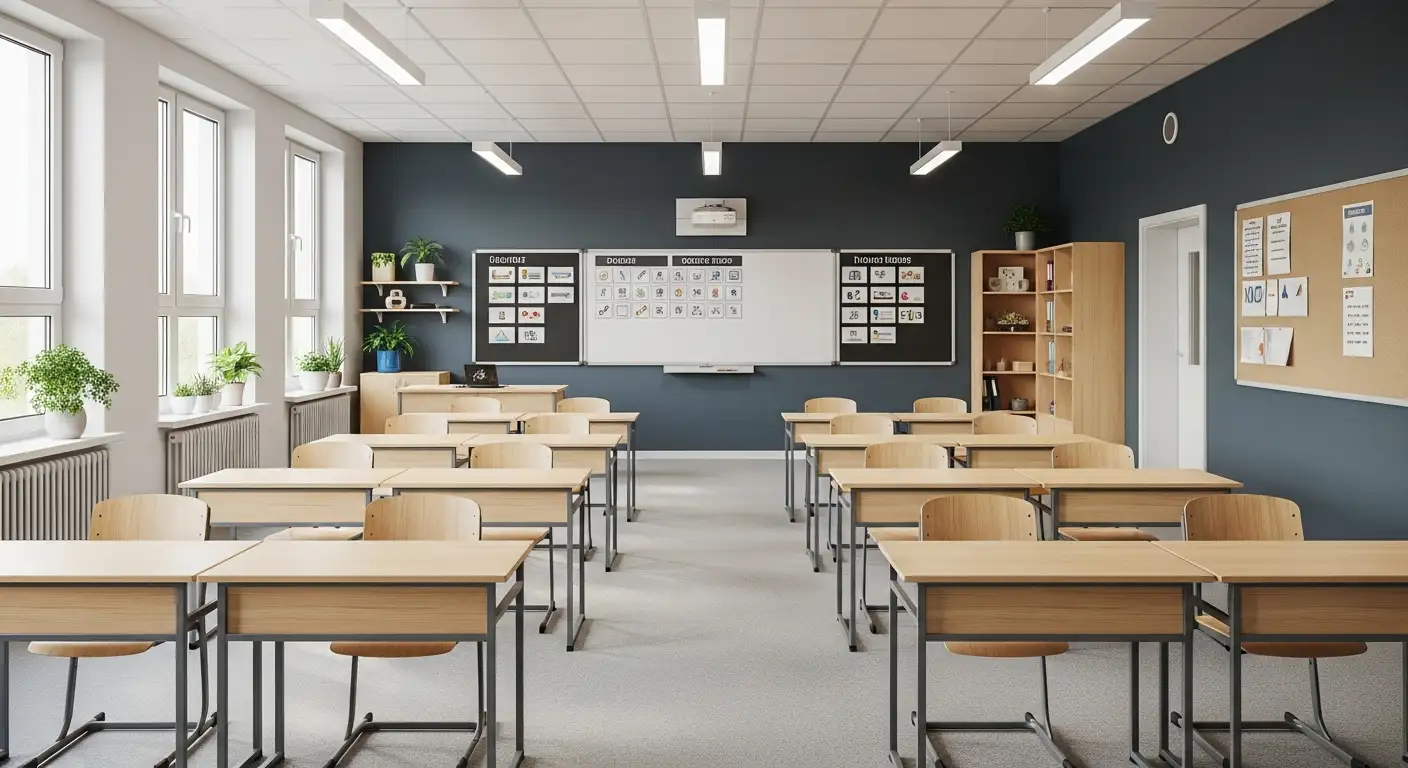Receptive Language Delay Not Autism


An Essential Clarification for Parents and Educators
Receptive language delay is frequently misunderstood, especially when contrasted with autism spectrum disorder. This article aims to clarify the distinctions, signs, causes, developmental milestones, and intervention strategies for receptive language delays, emphasizing that they are not necessarily indicators of autism. By understanding these differences, caregivers and professionals can foster better support and early intervention for affected children.
Defining Receptive Language Delay and Its Contrast with Other Speech Disorders

Can a child have a receptive language delay or speech delay without being autistic?
Yes, children can experience receptive language delays or speech delays without being on the autism spectrum. These delays are often developmental and may happen due to various reasons such as hearing impairments, genetic factors, or environmental influences. Having a language delay does not automatically indicate autism, although some children with autism also exhibit delays in receptive or expressive language. Distinguishing these conditions is crucial because they can be addressed with targeted therapies.
Receptive language delay specifically refers to difficulties in understanding spoken language, including following directions, grasping vocabulary, or comprehending questions. In contrast, expressive language delay involves challenges in producing words or sentences despite potentially understanding what others say.
Both types of delays can occur either independently or together, impacting a child's overall communication skills. It is important to seek early evaluation from professionals such as speech-language pathologists if developmental milestones like first words or following simple instructions are delayed.
While speech delays and receptive language delays are generally developmental, they may not be associated with other conditions. For example, a child might be a late talker but still engaged socially and responsive to attention, which often suggests a non-autistic developmental delay. Conversely, persistent difficulties with non-verbal communication, social engagement, and repetitive behaviors could point towards autism spectrum disorder, which often involves additional challenges beyond speech and language.
Early intervention through speech therapy can significantly improve language skills regardless of whether a child’s delay is due to autism or other developmental factors. Tailored therapy aims to strengthen receptive and expressive abilities and support overall communication development.
Signs, Causes, and Developmental Milestones of Receptive Language Delay

What are the signs, causes, and developmental milestones associated with receptive language delay?
Receptive language delay refers to a child's difficulty in understanding spoken language, including instructions, questions, and conversations. Common signs include not responding when their name is called, failing to follow simple instructions, and having trouble understanding vocabulary appropriate for their age. For example, a child might not understand the concept of body parts or ignore requests to perform actions.
By around 18 to 24 months, most children respond consistently to their name and can follow simple commands like 'give me the ball' or 'show me the picture.' Delays often become noticeable when a child does not exhibit these skills at expected milestones.
Various factors can cause receptive language delays. These include hearing impairments, which hinder a child's ability to hear and process speech sounds. Vision problems and attention disorders can also impact understanding. Broader developmental delays, such as those seen in intellectual disabilities or autism spectrum disorder, frequently include receptive language challenges.
Early detection through developmental screening is vital. Identifying a receptive language delay early allows for timely intervention, which can significantly improve educational and social outcomes. Speech-language therapy can help develop understanding skills, incorporating activities like following directions, listening exercises, and vocabulary-building tasks.
In summary, recognizing the signs early, understanding underlying causes, and targeting developmental milestones with appropriate therapy are essential steps toward supporting children with receptive language delays.
Differentiating Receptive Language Delay from Autism Spectrum Disorder

How can receptive language delay be differentiated from autism spectrum disorder?
Receptive language delay mainly involves difficulties in understanding spoken language. Children with this delay may struggle to follow directions, comprehend questions, or understand gestures and new vocabulary. Despite these challenges, they typically respond to social cues like eye contact and enjoy engaging in social interactions.
In contrast, autism spectrum disorder (ASD) includes a wide range of social, behavioral, and communication challenges. Children with autism often show signs like avoiding eye contact, being unresponsive to their name, and showing minimal reaction to social stimuli. They may also exhibit repetitive behaviors, restricted interests, and difficulty interpreting or using social cues.
Children with receptive language delays may have strong expressive language skills or develop speech later, but they tend to want to connect socially and respond accordingly when their understanding improves. Those with autism may prefer solitude, have trouble responding to social interactions, and demonstrate behaviors like hand-flapping or spinning.
Diagnosing the difference requires careful assessment by specialists. Behavioral observations, standardized language tests, and evaluations of social skills help determine whether the child's difficulties are primarily in understanding language or part of a broader autism profile. Early and accurate diagnosis facilitates targeted intervention, improving developmental outcomes.
In summary, while receptive language delay focuses on comprehension issues with generally preserved social motivation, autism involves a combination of social, behavioral, and communication impairments that may include, but are not limited to, receptive language difficulties.
Treatment and Intervention Strategies for Receptive Language Delay

What treatment options and intervention strategies are effective for receptive language delay?
Children with receptive language delay benefit from targeted speech therapy focused on improving their understanding of spoken language. Approaches that involve play and interaction make therapy engaging and effective, helping children practice following directions and understanding vocabulary in a fun, supportive environment.
Visual supports are especially helpful in enhancing comprehension. Using pictures, objects, and visual cues can make abstract language more concrete, enabling children to follow instructions more successfully and reduce frustration. For example, teachers and parents can use picture cards or visual schedules to illustrate daily routines and specific language tasks.
In addition to professional therapy, parent involvement is crucial. Strategies that parents can incorporate at home include providing simple, clear phrases, offering choices for children to select, and breaking complex information into smaller, manageable parts. Such techniques help reinforce what children learn during therapy and foster their understanding of language in everyday contexts.
Early screening is essential to identify delays promptly. Once identified, creating individualized intervention programs ensures that therapy targets the child’s specific needs. Custom plans often utilize visual stimulus control, prompting, and reinforcement to encourage progress.
Implementing systematic routines that integrate reading, naming objects, and engaging in typical daily activities further supports language comprehension. Overall, combining early, personalized intervention with active parent participation creates the most effective pathway for helping children overcome receptive language delays and develop strong understanding skills.
Why Recognition That Language Delay Is Not Autism Is Crucial
 Many children with speech delays are eager to connect and seek social interactions. They often enjoy engaging with others, respond positively when noticed, and try to communicate through gestures, facial expressions, or sounds. These behaviors indicate a desire for social connection despite their delayed speech.
Many children with speech delays are eager to connect and seek social interactions. They often enjoy engaging with others, respond positively when noticed, and try to communicate through gestures, facial expressions, or sounds. These behaviors indicate a desire for social connection despite their delayed speech.
In contrast, children with autism frequently show less interest in social engagement. They may avoid eye contact, prefer solitary activities, and show difficulty responding to social cues. Their focus might be more on objects or routines rather than on social interaction.
Receptive language delays typically do not involve social withdrawal or repetitive behaviors, which are characteristic of autism. Children with receptive language issues often understand others well but struggle to follow instructions or grasp new vocabulary—yet they may still seek social contact and respond normally to interactions.
Mislabeling a speech delay as autism can lead to delays in receiving suitable support. It might cause unnecessary worry for parents and may lead to inappropriate interventions. Conversely, missing signs of autism because of assumptions about speech delays can prevent children from getting the early, specialized help they need.
Early differentiation ensures better targeted interventions. By carefully assessing communication patterns, social behaviors, and other developmental milestones, professionals can distinguish between typical speech delays and autism spectrum disorder. Accurate identification allows for tailored therapies that address specific challenges, promoting better long-term outcomes and social integration for the child.
Moving Forward with Clarity and Support
Understanding that receptive language delay is not synonymous with autism reassures parents and educators, allowing timely, appropriate interventions without undue concern. Early assessment, targeted therapy, and continuous monitoring are pivotal in supporting children’s language development, ultimately facilitating better communication, social interaction, and overall growth. Recognizing these distinctions empowers caregivers to seek the right support, fostering an inclusive environment where every child's developmental needs are prioritised.
References
- Speech Delay vs Autism: What's the Difference?
- 3 Signs That Your Child's Speech or Language Delay Could Be ...
- The Difference Between Speech Delays and Autism - ECCM.org
- A Comparison of Receptive-Expressive Language Profiles between ...
- Speech Delay vs. Autism: Identifying the Differences | NAPA Center
- Speech Delay vs. Autism Spectrum Disorder: What's the Difference?
- Speech Delay and Autism: How to Tell the Difference - Expressable
Recent articles

The Benefits of ABA Therapy for Sibling Relationships and Family Bonds
Strengthening Family Ties Through Applied Behavior Analysis

How Speech Therapy Assists with Improving Verbal and Nonverbal Communication
Unlocking Communication Potential: The Role of Speech Therapy

Supporting Autism During Transitions
Strategies and Therapies to Navigate Transitions for Children with Autism

Low-Functioning Autism
Understanding Support and Therapies for Autism Spectrum Disorder Level 3

How Speech Devices Enhance Communication for Nonverbal Children
Transforming Communication: The Role of Speech Devices for Nonverbal Children

TEACCH Method For Autism
Comprehensive Therapeutic Approaches for Autism Spectrum Disorder


